
Edwin’s Roadhouse aka Capone’s MIAMI GARDENS

© 2024 Edwins, Inc

Henry August Baumann (6/10/1884 - 4/28/1939)
Henry August Baumann was born (1884) in Aurora, Illinois; the oldest of four children, brought into this world by August Baumann, born (1859) in Germany, and Lena Thill-Baumann, born (1863) in Wisconsin. His siblings included William Peter (1887,) Mary C. (1892,) and Elizabeth “Lizzie” (1896.) By 1900, Henry’s father August had relocated the family to West 51st Street in Chicago. By 1910, Henry was married and operating a saloon business located at 432 S. Canal St. It was here that he came in contact wtih Big Jim Colosimo, the first Chicago Mob boss of organized crime. Shortly after her death, Patrick hopped on a freight train and headed West, intent on travelling to California. However, while stopped in Opal, Wyoming, Patrick was forced off the train, and as it pulled away he cried uncontrollably while throwing stones at the passing freight cars. Patrick eventually settled in Colorado where he met the love of his life, married and raised a family, but never returning to Chicago, not even for his sister Mary’s death in 1937. Throughout his life, Patrick Carey feared Chicago and especially Henry Baumann. He did not reveal what he knew about his uncle, but his family said he was always terrified about it, and therefore he would not talk about what happened. But he did provide some clues. He told his daughter to never, never go there. He said something bad was going on, and to stay as far away as possible. Uncle Henry had put the fear of God into young Patrick, and inspired him into running away after Aunt Anna passed on. Patrick’s sister, Mary, who had stayed behind, eventually married a Chicago policeman ,and they had three children. Tragically on March 11th, 1937, she was gunned down in front of her 13 year old daughter. Two years later, her policeman husband also paid a similar fate. Patrick Carey’s family attributted all these deaths to the Purple Gang, aka the Sugarhouse Gang, out of Detroit. We are still researching and will update this as new information is developed. In 1912, Henry Baumann’s mother and sister were nearly killed when 5 masked men forced there way into their home located at 3830 S Honore St. in Chicago. Lena Thill-Baumann suffered 2 wounds and the papers reported “she may die,” while Henry’s sister Elizabeth received 2 wounds, causing both to be admitted to St. Bernard’s Hospital. As was typical during those times, no witnesses came forward and no motive was determined. Police shrugged it off to either robbery or a “fued.” One thing is for sure, no one in the Baumann family was talking. In 1928, Henry aquired the land for Miami Gardens for the sum of $900. Construction was soon undertaken, and an enormous 2 story commercial structure was built, with full basement and 2 auxiliary buildings. There were 11 rooms for lodging, a servants’ quarters and the building known as “the sugarhouse” where illegal alcohol was stored. There was a huge office located behind the main hall, with a handpainted oil mural depicting a tropical scene we now know was like the one in Al Capone’s Lexington Hotel suite. The second floor included a larger apartment with another similar handpainted mural, a master shower and bath. The shower and bath are tiled in imported Italian, Nile green tile with lavendar trim just like Al Capone’s Lexington Hotel shower. What the public didn’t know was that Henry A. Baumann buillt Miami Gardens in Peotone, Illinois, for Al Capone, to serve as a speakeasy and regional center for the Outfit. Our investigation shows that this location contained sophisticated banking equipment, routinely used for accounting large sums of money, tracking inventories, payables, receiveables and payroll. The over-sized business office, with hand-painted mural and secured entryway, is much too large for a small restaurant and lodge. Baumann spent the rest of his life operating Miami Gardens until his passing in 1939, at which time his sister Elizabeth (aka Betty or Lizzie) and brother-in-law Irv took over the location. Elizabeth also lived at Miami Gardens from the very beginning and worked as the cook. She was popular, friendly and an excellent chef. Erwin “Irv” Nesvacil was listed on the 1930 census as a servant, and was the first bartender. He eventually married Elizabeth. In 1939, Irv and Betty Nesvacil took over management of Miami Gardens. Robert Nesvacil, Irv’s brother, was listed as a lodger on the 1930 census. George Maringer is also listed as a servant, but nothing yet is known about him. Throughout our website we provide more facts about Miami Gardens, what we have uncovered through research and investigation, and share what our visitors have told us. But our story doesn’t end here. We are inviting the public to join us on this effort to uncover the whole truth about Miami Gardens. This business has been scarcely documented in the history of Peotone. It was built just one mile South of the township, had a construction cost of approximately $2,000,000 in today’s money, yet is undocumented in the historic publications of this town. Pictured is Gangster Hall, the original dining room where Al Capone would dine in a booth with drawn curtains, and Proprieters Betty and Irv Nesvacil.

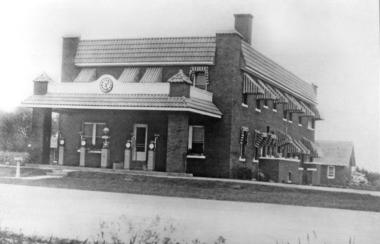
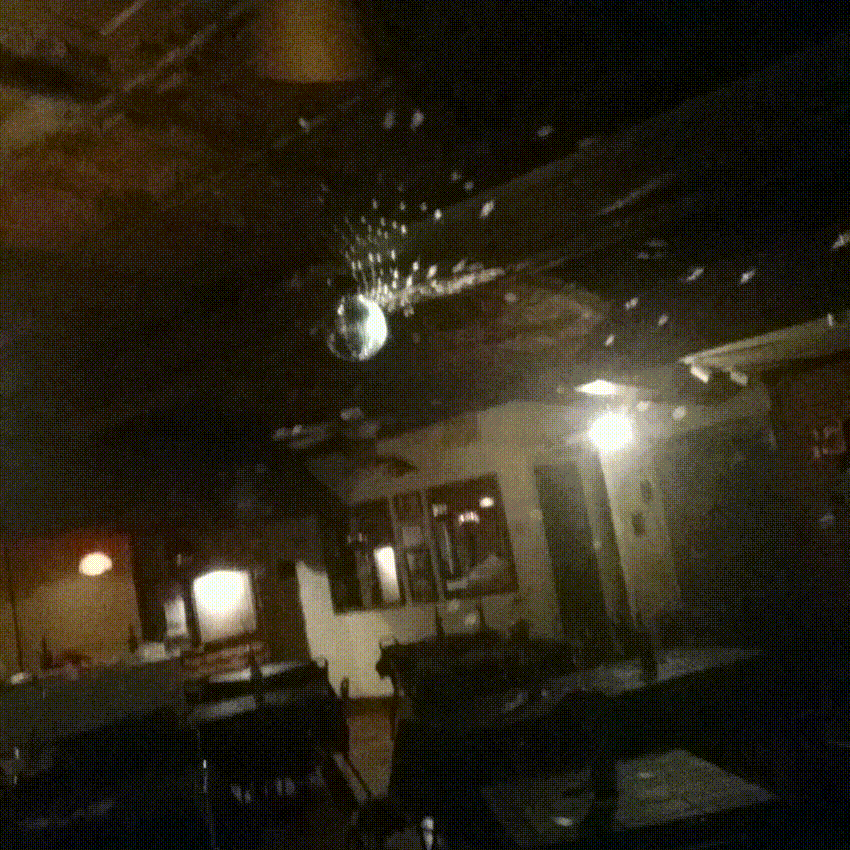


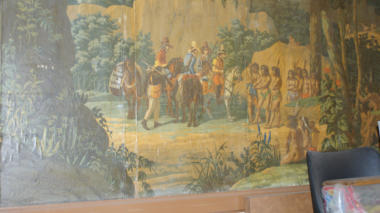
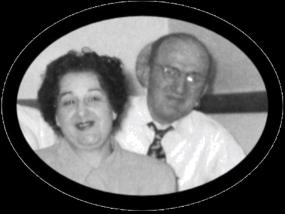

Edwin’s Roadhouse aka
Capone’s MIAMI GARDENS
Henry August Baumann
(6/10/1884 - 4/28/1939)
Henry August Baumann was born (1884) in Aurora, Illinois; the oldest of four children, brought into this world by August Baumann, born (1859) in Germany, and Lena Thill-Baumann, born (1863) in Wisconsin. His siblings included Willie (1887,) Mary (1892,) and Lizzie (1896.) By 1910, Henry had relocated to Chicago where he was engaged in a saloon business located at 432 S. Canal St. It was here that we believe he came in contact wtih Big Jim Colosimo, the first Chicago Mob boss of organized crime. Henry married Annastasia Whitty-Baumann on January 4th, 1910. At the time of the 1910 Federal Census, Anna was caring for her late sister’s children, Mary Whitty-Carey (13,) and Patrick Carey (16,) as both were orphaned when both parents died from TB. Patrick was working in the saloon business for his Uncle Henry, until the untimely death of Anna on October 9th, 1911. Patrick and Mary’s Aunt Anna also died from TB. Shortly after her death, Patrick hopped on a freight train and headed West, intent on travelling to California. However, while stopped in Opal, Wyoming, Patrick was forced off the train, and as it pulled away he cried uncontrollably while throwing stones at the passing freight cars. Patrick eventually settled in Colorado where he met the love of his life, married and raised a family, but never returning to Chicago, not even for his sister Mary’s death in 1937 Throughout his life, Patrick Carey feared Chicago and especially Henry Baumann. He did not reveal what he knew about his uncle, but his family said he was always terrified about it, and therefore he would not talk about what happened. But he did provide some clues. He told his daughter to never, never go there. He said something bad was going on, and to stay as far away as possible. Uncle Henry had put the fear of God into young Patrick, and inspired him into running away after Aunt Anna passed on. Patrick’s sister, Mary, who had stayed behind, eventually married a Chicago policeman ,and they had three children. Tragically on March 11th, 1937, she was gunned down in front of her 13 year old daughter. Two years later, her policeman husband also paid a similar fate. Patrick Carey’s family attributted all these deaths to the Purple Gang, aka the Sugarhouse Gang, out of Detroit. We are still researching and will update this as new information is developed. In 1912, Henry Baumann’s mother and sister were nearly killed when 5 masked men forced there way into their home located at 3830 S Honore St. in Chicago. Lena Thill-Baumann suffered 2 wounds and the papers reported “she may die,” while Henry’s sister Elizabeth received 2 wounds, causing both to be admitted to St. Bernard’s Hospital. As was typical during those times, no witnesses came forward and no motive was determined. Police shrugged it off to either robbery or a “fued.” One thing is for sure, no one in the Baumann family was talking. In 1928, Henry aquired the land for Miami Gardens for the sum of $900. Construction was soon undertaken, and an enormous 2 story commercial structure was built, with full basement and 2 auxiliary buildings. There were 11 rooms for lodging, a servants’ quarters and the building known as “the sugarhouse” where illegal alcohol was stored. There was a huge office located behind the main hall, with a handpainted oil mural depicting a tropical scene we now know was like the one in Al Capone’s Lexington Hotel suite. The second floor included a larger apartment with another similar handpainted mural, a master shower and bath. The shower and bath are tiled in imported Italian, Nile green tile with lavendar trim just like Al Capone’s Lexington Hotel shower. What the public didn’t know was that Henry A. Baumann buillt Miami Gardens in Peotone, Illinois, for Al Capone, to serve as a speakeasy and regional center for the Outfit. Our investigation shows that this location contained sophisticated banking equipment, routinely used for accounting large sums of money, tracking inventories, payables, receiveables and payroll. The over-sized business office, with hand-painted mural and secured entryway, is much too large for a small restaurant and lodge. Baumann spent the rest of his life operating Miami Gardens until his passing in 1939, at which time his sister Lizzie and brother-in-law Irv took over the location. Elizabeth also lived at Miami Gardens from the very beginning and worked as the cook. She was popular, friendly and an excellent chef. Erwin “Irv” Nesvacil was listed on the 1930 census as a servant, and was the first bartender. He eventually married Elizabeth. In 1939, Irv and Betty Nesvacil took over management of Miami Gardens. Robert Nesvacil, Irv’s brother, was listed as a lodger on the 1930 census. George Maringer is also listed as a servant, but nothing yet is known about him. Throughout our website we provide more facts about Miami Gardens, what we have uncovered through research and investigation, and share what our visitors have told us. But our story doesn’t end here. We are inviting the public to join us on this effort to uncover the whole truth about Miami Gardens. This business has been scarcely documented in the history of Peotone. It was built just one mile South of the township, had a construction cost of approximately $2,000,000 in today’s money, yet is undocumented in the historic publications of this town. If you or someone you know would like to contribute to the history of Miami Gardens, we invite you to contact us at 708- 258-3393 or email BillT@caponesmiamigardens.com. Pictured is Gangster Hall, the original dining room where Al Capone would dine in a booth with drawn curtains; and Betty and Irv Nesvacil.
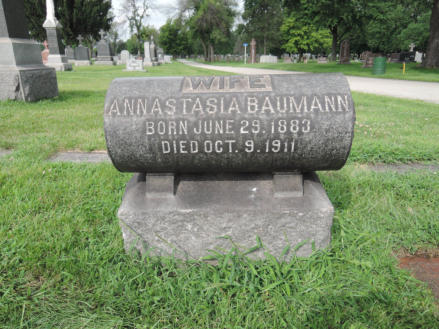




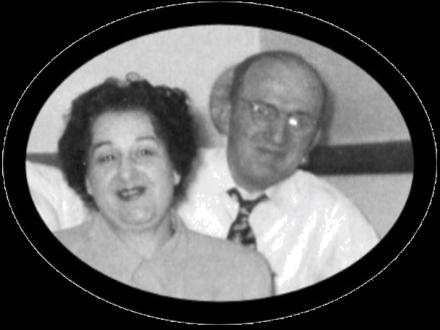

© 2024 Edwins, Inc.

















